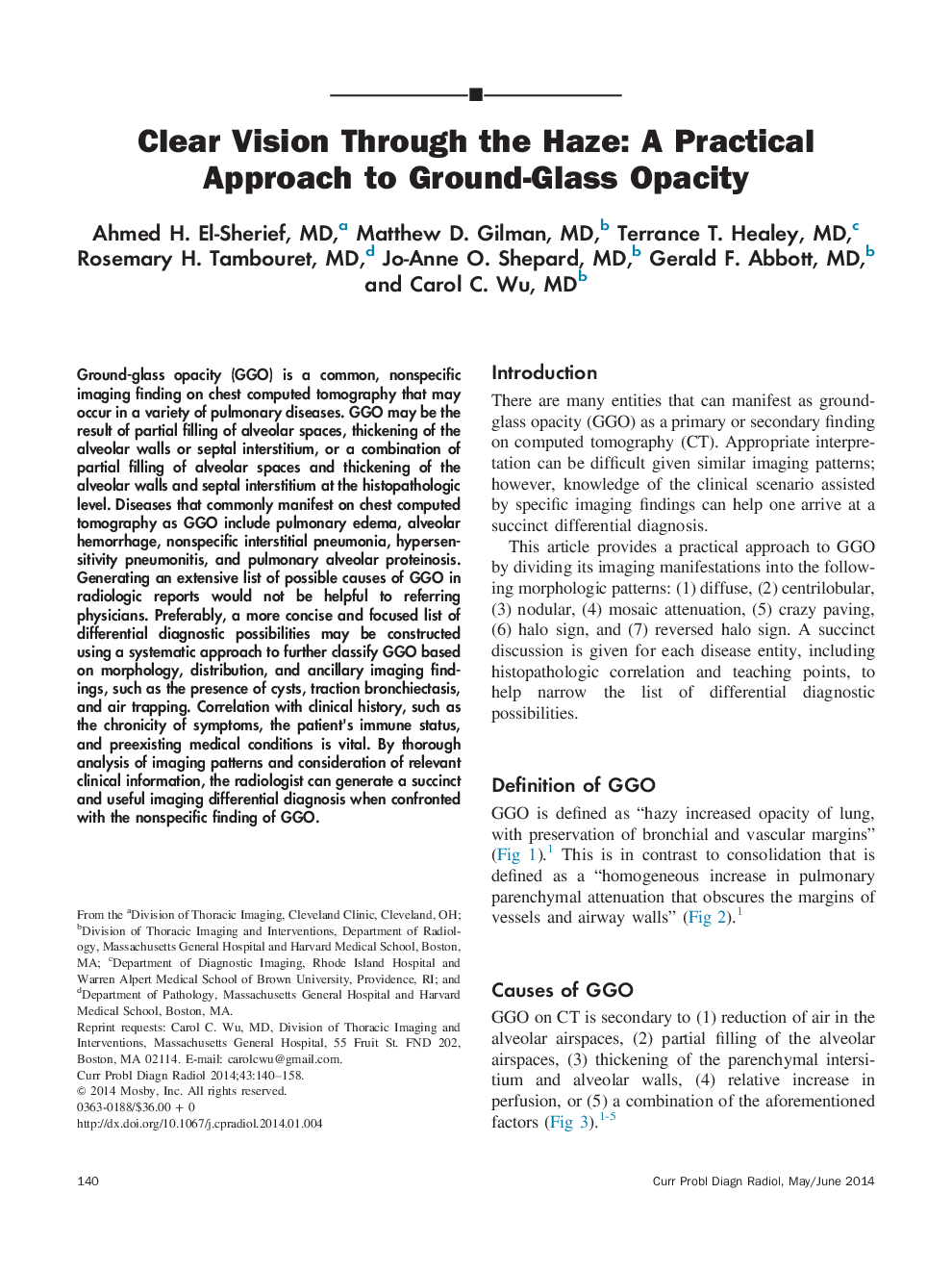| کد مقاله | کد نشریه | سال انتشار | مقاله انگلیسی | نسخه تمام متن |
|---|---|---|---|---|
| 4223576 | 1281847 | 2014 | 19 صفحه PDF | دانلود رایگان |

Ground-glass opacity (GGO) is a common, nonspecific imaging finding on chest computed tomography that may occur in a variety of pulmonary diseases. GGO may be the result of partial filling of alveolar spaces, thickening of the alveolar walls or septal interstitium, or a combination of partial filling of alveolar spaces and thickening of the alveolar walls and septal interstitium at the histopathologic level. Diseases that commonly manifest on chest computed tomography as GGO include pulmonary edema, alveolar hemorrhage, nonspecific interstitial pneumonia, hypersensitivity pneumonitis, and pulmonary alveolar proteinosis. Generating an extensive list of possible causes of GGO in radiologic reports would not be helpful to referring physicians. Preferably, a more concise and focused list of differential diagnostic possibilities may be constructed using a systematic approach to further classify GGO based on morphology, distribution, and ancillary imaging findings, such as the presence of cysts, traction bronchiectasis, and air trapping. Correlation with clinical history, such as the chronicity of symptoms, the patient׳s immune status, and preexisting medical conditions is vital. By thorough analysis of imaging patterns and consideration of relevant clinical information, the radiologist can generate a succinct and useful imaging differential diagnosis when confronted with the nonspecific finding of GGO.
Journal: Current Problems in Diagnostic Radiology - Volume 43, Issue 3, May–June 2014, Pages 140–158